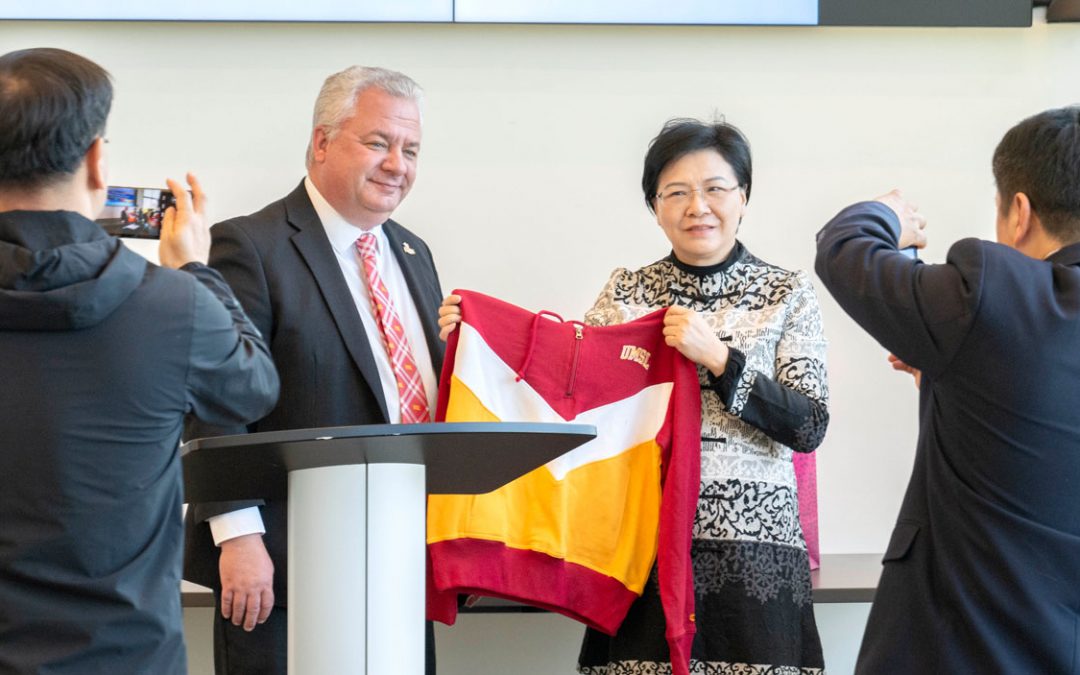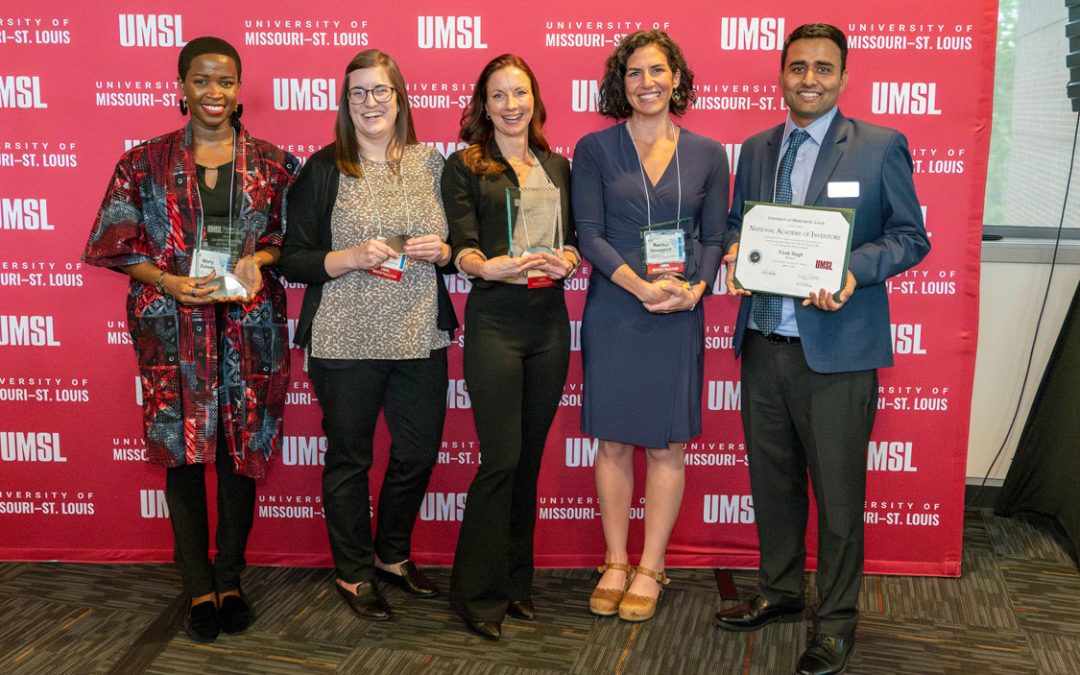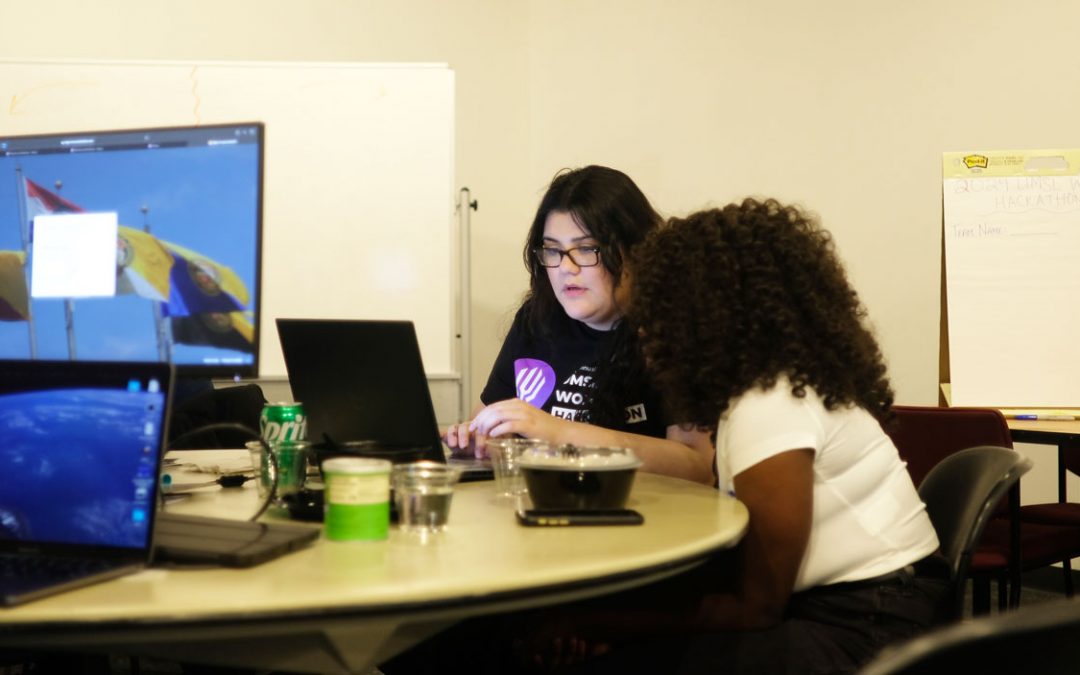
UMSL researchers, from left, Carl Bassi, Michael Howe and Wayne Garver collaborated to invent the Quantitative Three Dot Test, a handheld device to better measure visual suppression.
Carl Bassi, associate professor of optometry at the University of Missouri–St. Louis, wanted a better way to measure visual suppression, a condition that can lead to the development of amblyopia or “lazy eye.” So, with the help of two fellow UMSL researchers, he invented the Quantitative Three Dot Test.
The handheld device is the first to quantitatively measure visual suppression – when the brain does not process the information received from either of the eyes – and can detect it earlier than current methods. This could result in more effective treatment and less negative impact of conditions like amblyopia. Commonly referred to as “lazy eye,” amblyopia is called “the leading cause of vision impairment in children” by the National Eye Institute.
Bassi first conceived of the Q3D in the early 1990s when he was involved with a project testing visual function in patients with Alzheimer’s disease. He later worked with Michael Howe, senior research engineering technician in optometry at UMSL, and Wayne Garver, research scientist in physics at UMSL, to create a prototype. Howe and Garver designed and fabricated the Q3D.
Existing technology, the Worth Four Dot Test, can only qualitatively measure suppression as “normal” or “abnormal,” Bassi said. The Q3D is a considerably more sensitive test that can detect much smaller levels of suppression not measured by the Worth Four Dot Test.
“That means we can detect more subtle problems before they become more serious,” Bassi said. “Our hope is that earlier and more sensitive detection of visual suppression can help clinicians be able to treat visual conditions before they cause permanent loss in vision.”
The Q3D, which can be administered for use with adult and pediatric patients, can track intervention progress over time through quantitative measurement. The test can be completed in less than a minute, and the device is easy to use with patients as young as 3 years old. It is designed to fit on the end of a standard power supply handle found in most clinics and doctor’s offices.
UMSL researchers have tested the Q3D in clinical trials at the College of Optometry’s pediatric clinic at the university’s South Campus and SSM Cardinal Glennon Children’s Medical Center in St. Louis. Bassi said results from the studies have been encouraging. With the Q3D test now under patent protection, UMSL is working to commercialize the device, which came to fruition through teamwork at the university.
“This project, like all of our projects, has been a shared effort,” Bassi said. “It is great to have colleagues like Michael and Wayne, who can take ideas and work them into something real.”
More information:
http://www.umsl.edu/divisions/optometry/
http://www.umsl.edu/services/ora/














